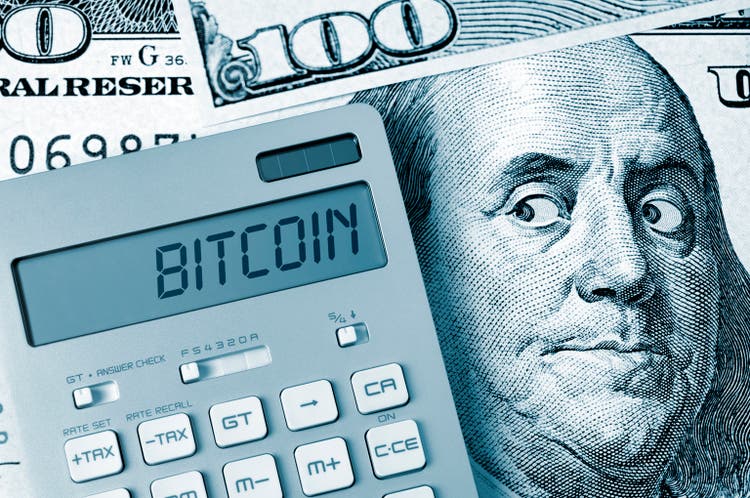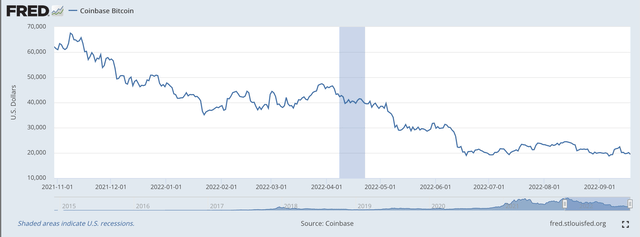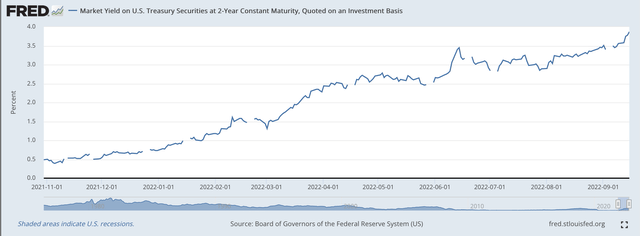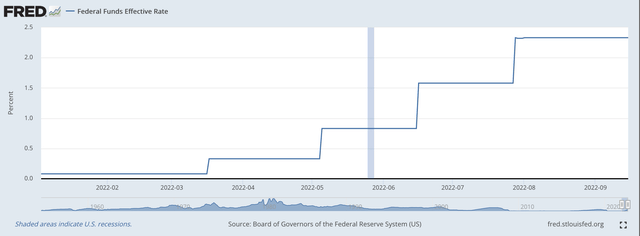Where does Bitcoin fit into the current picture?

hamzaturkkol/iStock via Getty Images
The Federal Reserve spent a lot of time last year convincing investors that it was going to tighten monetary policy to combat the growing threat of inflation.
But when the Fed continued to buy $120.0 billion in securities each month throughout the year, investors found it hard to believe that the Fed was really going to do what it said it would do.
Then, in October, the Federal Reserve began reducing the amount of “excess reserves” that were in the banking system through the use of reverse repurchase agreements, and the investment community began to pay attention.
And some markets began to rally as the Fed continued to act and short-term interest rates tended to respond to the Federal Reserve’s efforts.
For example, the price of Bitcoin (BTC-USD) peaked on November 8, 2021. For that day, the cryptocurrency peaked at $67,510.

Bitcoin (Federal Reserve)
Bitcoin, due to its risky nature, was one of the first assets to experience a falling price due to the changes taking place in the financial system.
As just one example, the S&P 500 stock index also peaked due to the efforts of the Federal Reserve.
However, the peak for this index came on January 3, 2022, about two months after the peak reached by Bitcoin.
Evidence that the Federal Reserve’s efforts had an effect on the financial markets, we see that the yield on the 2-year US Treasury bond began to creep up in November and December 2021.
However, you can see from the following chart that the yield on the 2-year security really didn’t start rising faster until early February, and then things started to pick up further.

US Treasury Yield – 2-year (Federal Reserve)
It was in mid-March that the Federal Reserve began raising its own key interest rate. (I will discuss this a bit more later.)
But now investors saw how the Fed’s actions affected riskier assets.
One can see from the chart above that the decline in the price of Bitcoin began to accelerate in April, May and June as the markets moved even further from riskier assets to safer assets.
In effect, there was a movement of international funds into “safe assets” as risk-averse investors took money out of riskier global investments and channeled it into the safe haven of the United States.
Here we see the move into the US Dollar as the Dollar appreciated against the Euro, the British Pound and other currencies that are lagging behind the Federal Reserve in its efforts to fight inflation.
Check this diagram.
In November 2021, just as the price of Bitcoin peaked, it cost more than $1.1600 to buy one euro.
In July 2022, the exchange range between the US dollar and the euro began to hover around parity… one dollar for one euro.

US Dollar/Euro exchange rate (Federal Reserve)
So what do we have here?
The Federal Reserve is moving to tighten monetary policy.
Market interest rates rise.
The value of the US dollar is getting stronger.
And the price of risky assets falls as investors move money from riskier assets to safer places to put their money.
Everything seems to fit.
Fed meeting this week
And the Federal Reserve has a Federal Open Market Committee meeting this Tuesday and Wednesday, September 20 and 21.
So far this year, the Fed has moved the interval for the key interest rate four times.
This week, the expectation is that the Fed will increase its range by at least another 75 basis points to top what it has already done.

Effective Federal Funds Rate (Federal Reserve)
Further increases are expected this year.
In fact, many surveys have shown that analysts expect the range for the fund’s interest rate to move well into the fours next year.
The yield on the two-year government bond, now just below 4.00 per cent, will also rise well into the 4 years.
And if this happens, the value of the US dollar can be expected to remain strong against the British pound and the euro.
More Fed moves will be followed quickly by the Bank of England and the European Central Bank as they work to prevent the Fed’s policy rate from getting too far ahead of policy rate movements.
But the value of the US dollar should continue to rise, albeit at a slightly slower pace.
Given the results of the last twelve months, these moves should not bode too well for the value of Bitcoin.
Again, the market movement will be from riskier assets to less risky assets as investors become more cautious during this period of monetary tightening.
Right now, investing in cryptocurrencies is considered quite risky, especially as many analysts believe that the Federal Reserve will follow through on its promise to do what is necessary to bring the inflation rate back to the Fed’s target of 2.00 percent.
An additional note: investors are much more sensitive to these conditions now than they were in November 2021.
Consequently, I think the market will be much more volatile than it has been in the last two years.
![Why Bitcoin [BTC] may have one last dance at $12,800 before critical moment Why Bitcoin [BTC] may have one last dance at $12,800 before critical moment](https://www.cryptoproductivity.org/wp-content/uploads/2022/12/po-2022-12-02T134636.715-1000x600-520x245.png)

